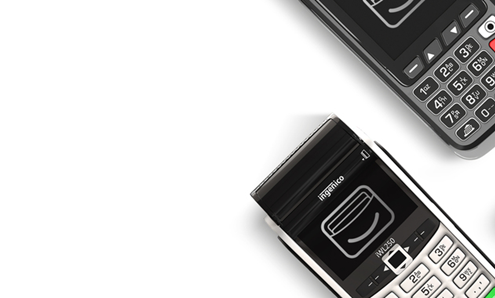6 tips on how to create an email newsletter people want to open
12 April 2023 | Published by John Ford
Sending out a regular email newsletter is a great way to keep in touch with your customers and remind them what your business has to offer. However, if you want people to actually open and read your newsletters, you need to put some thought into the structure, content, timing, and a lot more. In this article, we'll outline how small businesses can create email newsletters that people will actually look forward to receiving, discuss the benefits of launching one in the first place, and detail the steps to take to ensure your newsletter is as successful as it can be. So, let's get started.
If you're anything like me, half of all email marketing you receive will either head straight to the trash or be 'saved' for a later time that, deep down, you know will never come.
Far too many small businesses launch email newsletters simply because they believe they have to, without taking much time to consider the finer details. That probably goes a long way to explaining why so many email marketing projects fail or end up being abandoned altogether.
As with any project, proper planning and a clear understanding of the whys and hows will place you in good stead to develop a successful small business newsletter with longevity.
Here's what you need to focus on:
Find your niche
When it comes to email newsletters, finding your niche is essential. You need to know who your target audience is and what type of content will interest them. This will help you create content that people actually want to read, rather than forcing them to sift through a bunch of irrelevant information in order to find the one thing they're interested in.
It's also important to be consistent with your messaging. If you promise readers that they'll find interesting and valuable content in your newsletter, you need to make sure that you deliver on that promise. Failing to do so will only result in lost subscribers.
And bear this in mind: trying to appeal to everyone is a surefire way to fail at email marketing. Instead of trying to be all things to all people, focus on finding a niche you can serve — is there an angle or subject your competitors aren't covering? It's a good idea to subscribe to other businesses that target your audience and make notes about what you think works for them, what doesn't, and whether there are any gaps you could fill.
Take some time to figure out your customers and what kinds of content they would be interested in.
Find your voice
One of the keys to creating a successful email newsletter is finding your authentic brand voice. This means expressing your ideas and values in a way that is true to your company and resonates with your target audience. When readers feel like they know what to expect from your newsletters, they are more likely to keep opening them.
Developing a strong brand voice also helps to build trust with your readers. They will come to see you as an authority in your field and be more likely to engage with your content. So, take some time to figure out what makes you unique and how you can communicate that through your newsletters.
Stay on topic
One of the biggest mistakes you can make with email marketing is straying from the topics your readers care about. Remember, they subscribed to your newsletter because they thought it would be relevant to their lives or interests. So, make sure every issue contains content that is related to the overall theme of your newsletter — maintaining a focus will remind your readers why they hit subscribe in the first place.
Of course, you don't have to stick to one topic per issue but try to avoid including too much variety. Otherwise, your newsletters will start to feel disjointed and difficult to follow.
Consistency is key
One way to ensure your newsletter is consistently top of mind for your subscribers is to send it at the same time every morning, week, or month — depending on the cadence that suits your audience. Whatever the schedule, this will help to create a sense of expectation in the long run and, if you manage to get the content right, it'll also give people something to look forward to.
Pro tip: think about who your readers are and when they're most likely to be flicking through their emails. Could that be on their lunch break? Or maybe on a Sunday evening? Perhaps a lot of your audience commutes to work using public transport? It's unlikely you're able to read their minds, so it's worth testing the water by sending out your first few editions at different times and checking what sort of open rate you receive. Is there a clear winner?
Always provide value
In order for people to keep opening your newsletters, you need to provide them with value. This could be anything from interesting news and trends in your industry, helpful tips or insights, or simply entertaining content. Whatever you choose, make sure it's something that your readers will find useful or interesting. The aim is to provide them with something they'll either want to read, click through to or share with their friends.
Please note: this translates as avoiding the temptation to sell or promote your products or services in every issue.
Though it doesn't mean you can't ever mention your business or products, those elements should only make up a small part of your overall content strategy. And if you give your people want they want, they'll naturally feel more inclined to give you something in return (i.e. custom).
Length and Readability
When people are scrolling through their email inboxes, they're not looking for something that's going to require a lot of effort to read. So, make sure your email newsletters are easy to skim.
This means using short paragraphs, clear headings, and plenty of white space. You should also avoid using large blocks of text or dense chunks of information. If a particular section is starting to look too long, consider breaking it up into smaller sections or including a link to another page where readers can find more detailed information.
No one wants to open an email newsletter and be confronted with a wall of text. So, it's important to keep your newsletters reasonably short. This doesn't mean you have to limit yourself to one or two paragraphs but try to avoid going overboard.
The ideal length will vary depending on the type of content you're including, but as a general rule, shorter is better. You can always provide links to longer articles or blog posts for readers who want more information on a particular topic.
In Conclusion
Remember, email newsletters can be a great way to keep in touch with your customers and promote your business, but it's important to make sure they're well-written, timely, and provide real value.
By following these tips, you can create an email newsletter that people will actually want to open. By sending it at the same time each month, finding your niche, and providing value, you can build a successful email marketing campaign that will help to grow your small business.
And if you found this advice helpful, we've got plenty more tips for you over on the takepayments blog.





